Hiking Hacks: Long-Distance Prep Tips and Tricks for Rail-Trails 101
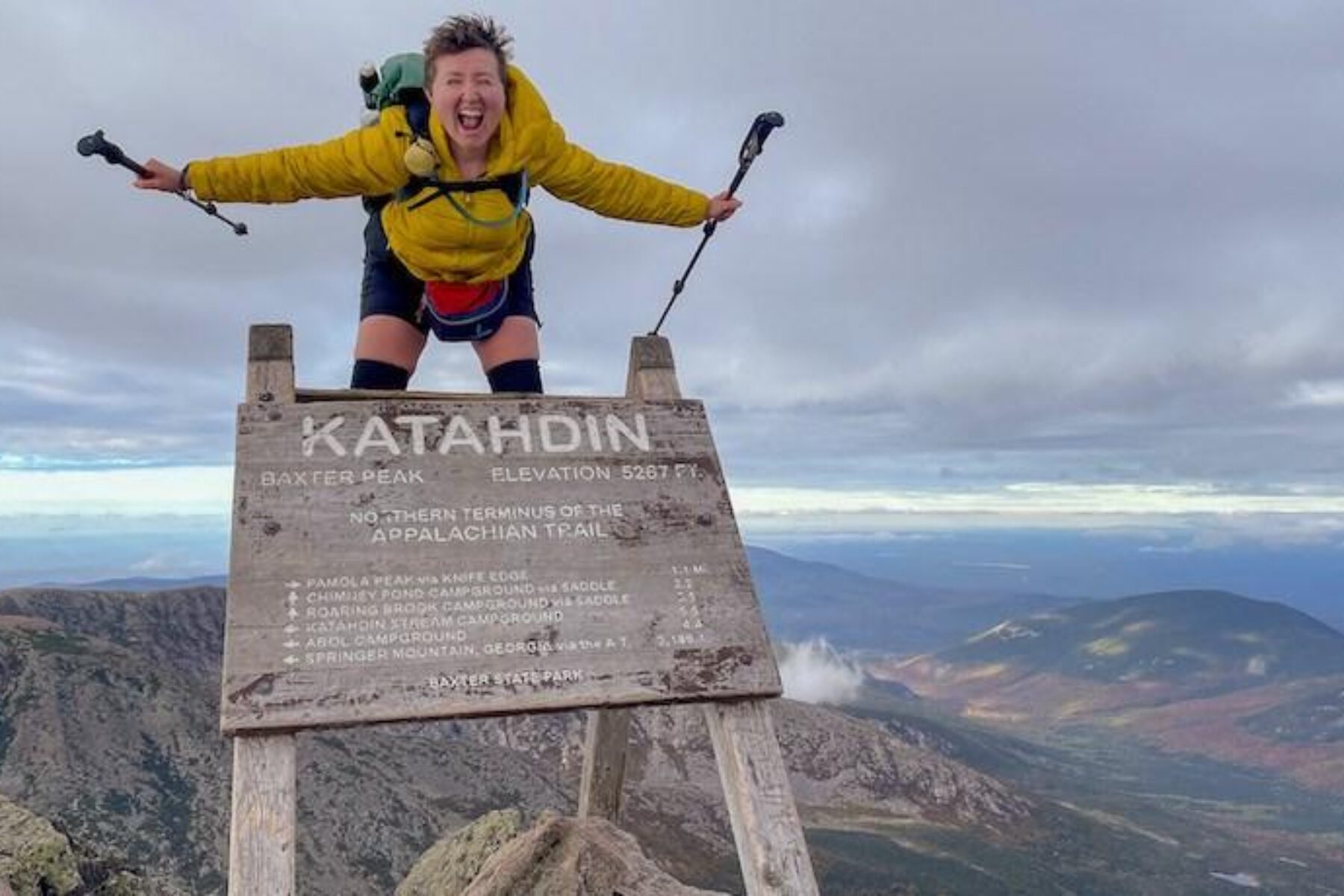
A long-distance hike can truly be the adventure of a lifetime. From the oldest thru hiking trail in the United States, The Long Trail, in Vermont, to legendary multiuse routes like the Great Allegheny Passage (gaptrail.org), we’re incredible lucky to have access to thousands of miles of trails in America.
With rail-trail thru hiking becoming more and more popular every day, I wanted to share some knowledge I’ve learn over the many years and thousands of miles I’ve spent on hiking and trails about the world.
Training
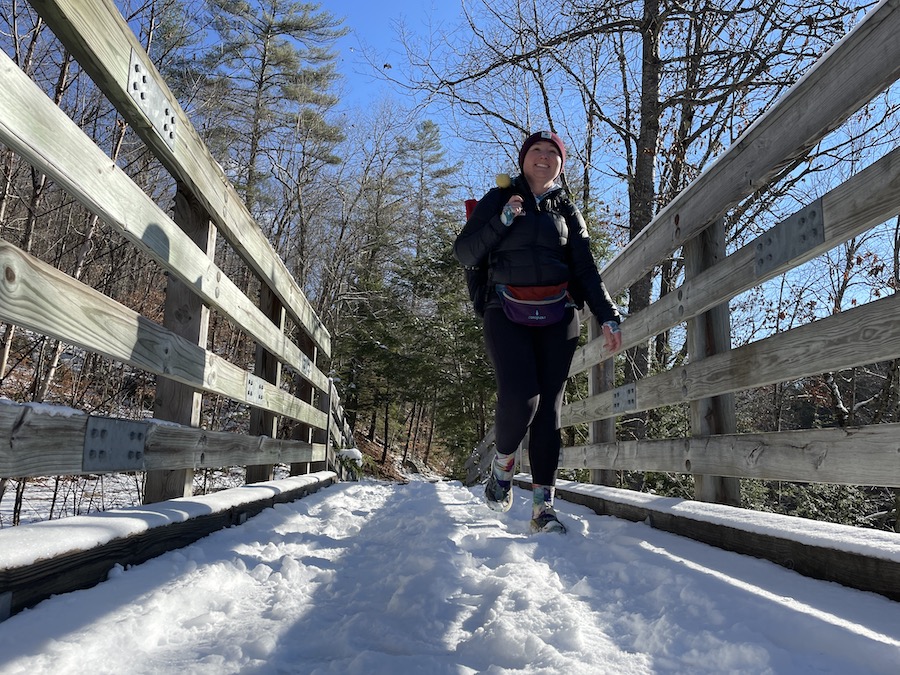
The generally flat, paved routes of may rail-trails might imply an easy day on the trail, but don’t be fooled. For any trails, half- to full-day hikes are completely different than multiday hikes. With day trips, your body has time to recover the next day. On a long-distance hike, your body doesn’t have that luxury. To help prevent injury, and to ensure you’ll have a better experience, it’s important to train.
It’s a common myth that the only way to train for a hike is to hike. The fact is, for a long hike, strength training is the most crucial part of training.
“Stronger muscles can withstand more load;” said Personal Trainer Becki Rupp. “Strength training makes it easier for a hiker’s shoulders and back to carry their pack, [and] it improves their legs’ ability to hold up during long days of hiking.”
Before my thru-hike of the Appalachian Trail in 2021, my training consisted of core, back, knee and ankle strengthening exercises. To give you an example of my workouts, let’s focus on the knees.
On long-distance hikes, your knees will be working overtime—and the longer the hike, the harder you’ll be on them. Straddle good mornings, bent knee-calf raises, and wall squats—all of which are demonstrated in the video below—can strengthen your knees and help to prevent injury during your hike.
Note: If you are uncertain about an exercise in this video or in general, be sure to consult your doctor or a certified health or fitness professional.
During a long-distance hike, your body works overtime, so make sure you start training well in advance, and find a plan that works for your current fitness level.
Planning: Logistics
The list of things to cover in the planning process for thru-hike is long. However, there are two really important things to keep in mind: How many miles you’re going to do each day, and where you’re going to sleep.
I always tell people to plan fewer miles than they think they’ll accomplish. Along many rail trails, there are beautiful views, outdoor opportunities, restaurants, museums and many other attractions. Planning too many miles in a day won’t allow you to be spontaneous and explore.
On a recent rail-trail hike in upstate New York, I stumbled upon an amazing bakery along the trail with the most delicious lemon blackberry cupcake I have ever tasted. I spent 45 minutes there snacking and chatting with the owner. If I had built in too many miles, I wouldn’t have been able to sit and relax.

Also, know—before you go—where you’re going to lay your head at the end of a long day. Some rail-trail hikers enjoy staying at local inns, and others like campgrounds. Depending on the length of your hike and how popular the trail is, it can be critical to know where you’re going to stay in advance.
To help save money on campground stays, you might consider getting a KOA or Thousand Trails membership. Some State Park season passes also offer discounts on campsites. For hotels, use an app that offers free nights after a certain number of stays, like hotels.com.
For rail-trail hikes that last multiple days or weeks, it’s a good idea to research areas before you go (holidays and big events or festivals could greatly impact the availability of accommodations), but hold off and book your hotel or campground only a couple of days in advance, if possible. That way, you’ll have more flexibility, and a much better idea of when you’ll be arriving in certain areas.
I recently had a friend hike the Camino de Santiago in Spain, and she booked all her accommodations in advance for her two-week trip. Four days in, she was exhausted. She knew she needed a day to rest, but wanted to make it to the next town for her nonrefundable hotel reservation. She ended up skipping a section of the trail and used public transportation to get to the next town. While this is possible in some places, with many rail-trails, especially ones in remote areas, public transportation can be limited. Forcing yourself to hike when you’re tired can easily result in overuse injuries, like tendinitis and plantar fasciitis. Accidents can also happen, like tripping, spraining an ankle, or worse.
It’s ok to slow down and rest—your body will thank you for it. The trail will still be there after your day off.
To access trip-planning information for more than 40,000 miles of rail-trails and multiuse trails—including interactive maps, restrooms, parking and water waypoints, user reviews and ratings, photos, contact information and website info—visit TrailLink.com™, RTC’s free trail-finder website.
Planning: Terrain and Grade
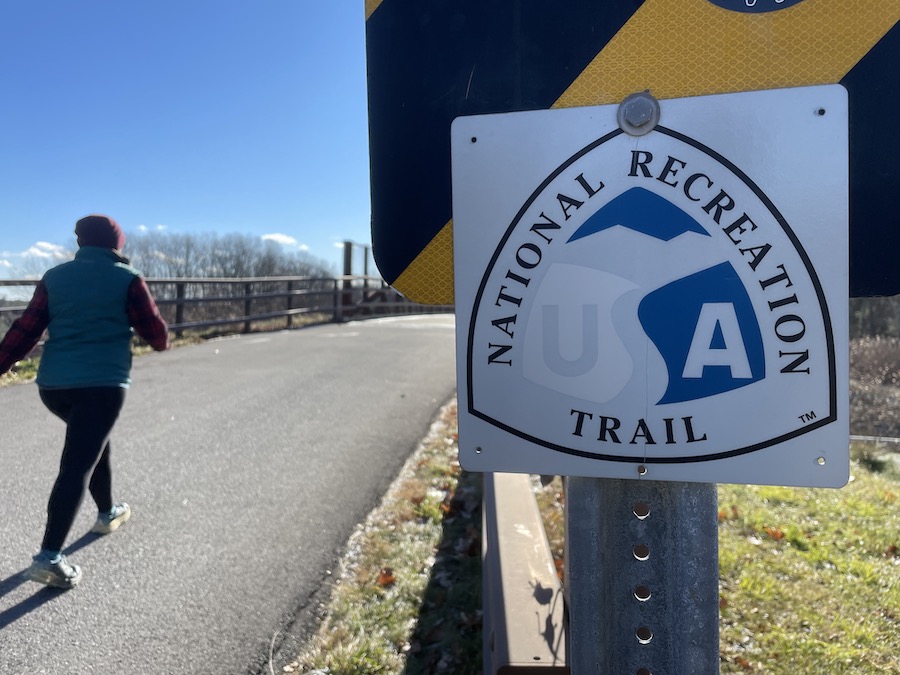
Not all rail-trails are created equally when it comes to terrain. While many people assume rail-trails are paved, that isn’t always the case. Many trails are surfaced with gravel or packed-down dirt and, on occasion, can even comprise sand.
Knowing the terrain is important to help plan out each day on the trail. You can tick off more miles on dirt and gravel, while paved paths can be challenging on the knees and ankles, making for fewer miles.
And of course—research the grade. The general rule of thumb: The lower the grade, the easier the hike. While most rail-trails don’t have a grade higher than 2% or 3%, in mountainous regions like Colorado, the grade can get up to 68%! Knowing this in advance can save you from unnecessarily long or painful days.
Foot Care
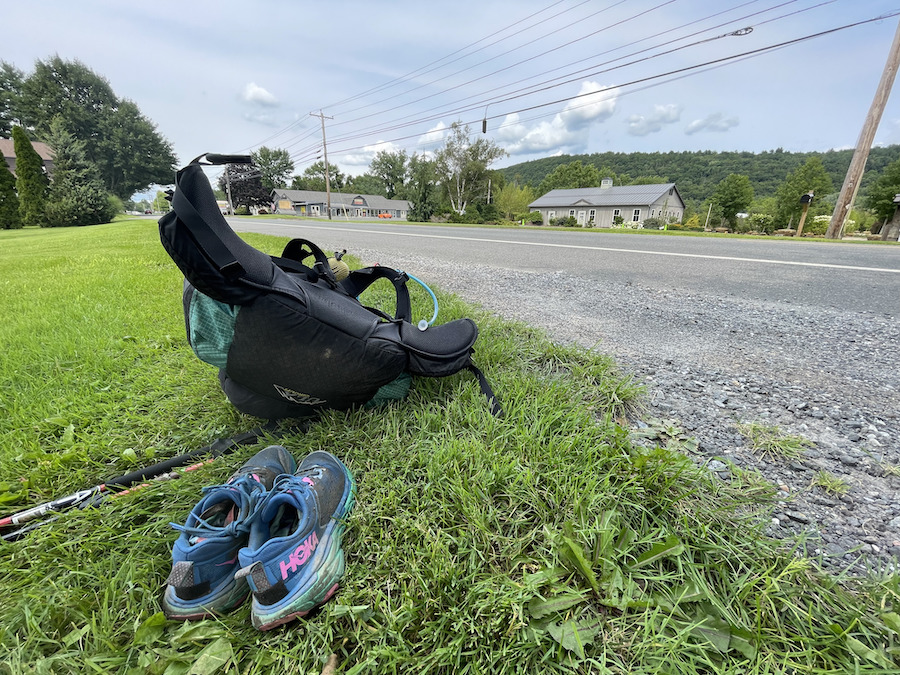
Feet work overtime when hiking, so taking good care of them—before and during your trip—is essential.
Go into any hiking Facebook group and ask for recommendations on the best hiking boots or shoes, and you’ll get hundreds of answers. Each person will swear that they’ve found the best shoe, and they probably have, for their feet. Finding the right pair of shoes is no easy task, and there will be a lot of trial and error to figure out what works for you. I’m a big fan of trail runners as they’re lightweight, good at gripping wet surfaces and usually dry overnight after a day of hiking in the rain.
Whatever shoe you get, take out the insoles they come with. Your feet deserve better than an insole that provides little to no support! Most local outdoor gear stores have a selection of hiking insoles to choose from. If you’re not sure what kind of support you need, many insole companies have quick surveys on their websites to help you find the right fit. If after a few tries you still haven’t found an insole right for you, talk to your primary care provider for their recommendations.
My final bit of foot care advice is something I picked up from a fellow hiker while on the Appalachian Trail. They recommended I carry a small, cork massage ball to roll out my feet. This was a game-changer! After long days, a quick foot massage helped my feet relax, and I was able to work out the sore spots. Creating a foot care routine that works for you can make or break your hike!
Hydration
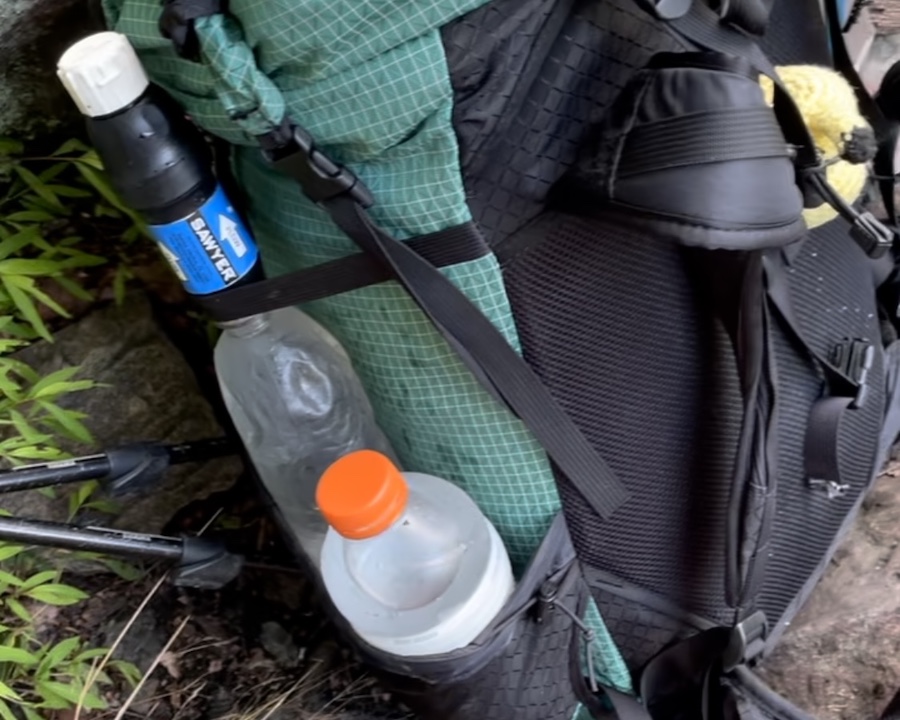
For many rail-trails, information about water and restroom availability is posted online in some format; however, even with this information, you really don’t always know when you’ll be able to access clean water. In some cases, the information could be outdated. In others, a fountain or other public facility may be out of order or closed.
Because of this, I always carry a squeeze water-filter system. This way, I can get water from any water source. This type of system can be attached to a squeeze pouch or SmartWater style bottle for easy filtration into a secondary bottle or directly into your mouth.
Most of the time, a water filter is enough, but if you’re near farmland or larger roads, purification tablets will ensure your water is safe to drink. There are several different kinds, so read the label carefully to ensure what you purchase will prevent any waterborne diseases in the area you’ll be hiking.
When the weather is hot, or if you’re just sweaty like me, always have some electrolytes on hand. I like using electrolyte tablets as they create less trash for me to carry in my pack and aren’t as messy as electrolyte packets. However, these might be harder to find in small towns.
Keep in mind, consuming too much liquid with electrolytes can make you feel sick, so make sure you have a small water bottle just for electrolytes, in addition to your big bottle.
The Backpack
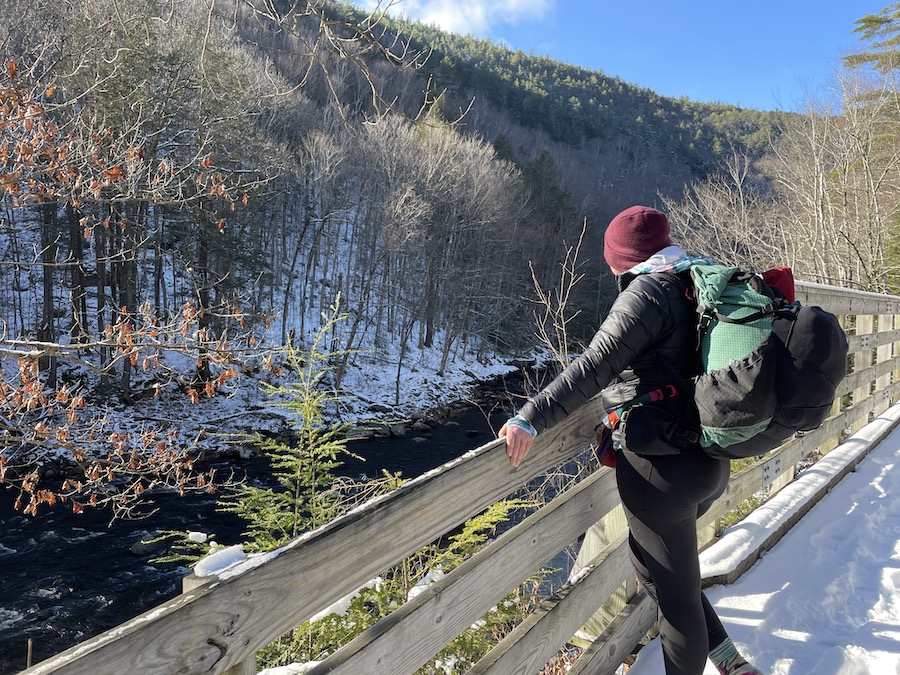
A backpack—that fits you properly—is the most important piece of gear to have on any hike, let alone one that may last three days or even three months. Everyone’s body is different, and while that hand-me-down backpack from your dad is really special, if it doesn’t fit properly, you could be in for a long and painful hike.
To get a properly fitted backpack, you’ll need to measure yourself first, so grab a measuring tape and a friend, and follow the directions in the video below.
Also, several backpack companies, like Gregory and Granite Gear, are working to make hiking and backpacking more inclusive, with pack designs that are either adjustable or manufactured to accommodate diverse body sizes. Hopefully, more companies will follow suit, so everyone can have properly fitting packs to explore with.
I hope these hiking tips help you get out on the trail with confidence. Happy hiking!
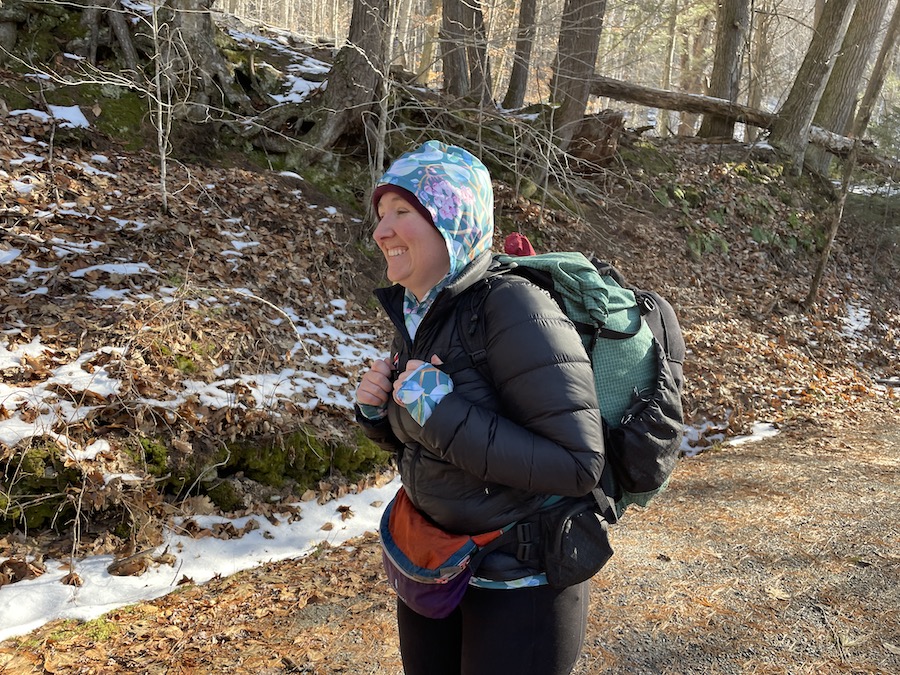
Don’t Miss Related How-To Blogs:
- How to Train for a 5K or 10K Using Rail-Trails / Cómo entrenar para una carrera de 5K o 10K usando un sendero ferroviario
- Step to it: Seven Ways to Spice Up Your Walks / Mejorar el paso: siete maneras de darles vida a las caminatas
- 10 Great Rail-Trails for Dog Walking
- How to Be Equipment-Ready for Your First Long-Distance Trail Ride / Cómo tener el equipo listo para su primer
- How to Prepare for Your First Long-Distance Trail Ride / Cómo prepararse para su primer viaje de larga distancia por senderos

Donate
Everyone deserves access to safe ways to walk, bike, and be active outdoors.



